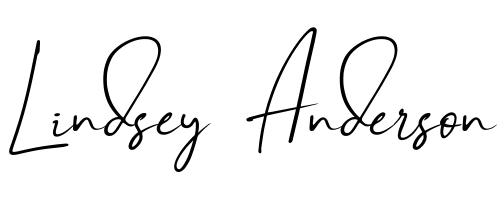When it comes to online marketing, social media is the cornerstone for nearly everything we do. How we choose to put ourselves out there—and the ways we choose to do it—are important if we want to ensure that we’re getting the best results we can. So, when it comes to Facebook ads and Facebook ads best practices, how can we make sure we’re doing our best and achieving the best possible traffic results?
Zach Spear knows the answer! A Facebook ads manager—as well as a stellar copywriter—tells us everything he knows about what Facebook ads can offer you and how to make sure you’re utilizing the sometimes complicated algorithm that Facebook uses in order to get the best possible results. Let’s jump in!

Facebooks Ads Best Practices and The CLICK Technique
Before we get into the details of what Zach has to say about Facebook ads best practices, however, we can’t forget to talk about The CLICK Technique! A method I invented—that you can get in on for free!—The CLICK Technique is a must have for businesses owners alike. Each letter of the word “CLICK” stands for a different step you must take in order to achieve the success you’re looking for, and when combined, The CLICK technique gives proven results time and time again!
In the case of Facebook ads best practices, we’ll focus on the first “C” in the word “CLICK”, which stands for curiosity. In order to get people interested in what you’re offering, you need to pique their curiosity. Your ads need to pull them in, and make your target audience want to know more about what you’re offering, and why it’s better than the rest. Without curiosity, running ads would be pointless, and you need to make sure you’re getting the attention of the right people in order to ensure the effectiveness of your Facebook ads.
The Success Story of Facebook Ads Best Practices
In the case of Zach Spear, he has nothing but good things to say about utilizing Facebook ads, and Facebook ads best practices. In fact, he puts a lot more faith into Facebook ads than anything else and can safely say that the bigger Facebook gets, the more people are running to sign up, ensuring you a larger target audience than you could reach through cold calls or cold emails.
With the amount of people handling their business online as well, it just makes sense to use the—arguably—most popular social media site to generate efficient and trustworthy leads from, and Zach can ensure you success with Facebook ads best practices with just a few of his genius tips below.
How Zach Got Started with Facebook Ads
Before Zach cracked the code on Facebook ads best practices, he started off a little differently. Seeing people with tens of thousands of followers on websites and blogging platforms had him thinking—there has to be a way to get people to follow me, as well as leverage the internet in a way to build the same kind of business. But how?
After blindly venturing into online marketing (and making a few rookie mistakes along the way), Zach ended up cracking the piece of the puzzle that requires you to have a online presence and a way to get people to notice said online presence. Venturing into the world of paid media, Zach quickly learned that if he can spend a certain amount of money to get a certain amount of sign ups, he can use that ratio to generate the best results for him and his business.
The rest is history! After six to nine months of running his own Facebook ads, Zach started seeing the results he’d been looking for, and those results got him to where he is right now—copyediting Facebook ads for other people and using Facebook ads best practices to bring success to others that need it!
How To Handle Facebook Ads
According to Zach, when it comes to Facebook ads best practices, there’s a few core issues that tie together with an overarching theme. You have to find the answers that work, not the ones that are recommended.
When you initially sign up for Facebook ads, they’ll point you in certain directions, giving you “recommended” options for your auto placements, optimization, and so on. The number one thing Zach said is do not use them! If you choose those recommended options, Facebook makes the most money!
If you’re spending thousands of dollars on Facebook ads and not making any money, Facebook will try to recommend that you show the same ads on other social media sites you might have linked—like your Instagram or your Audio Network. Both Zach and myself can confirm that this is a terrible idea! The same ad doesn’t work across all audiences, and the sharing option will hurt you more than it’ll help.
Targeting and Messaging, and How To Master Them
Once you’ve gotten a handle on how to make sure your ads are going out the way you want them to, you need to make sure you’ve got your targeting on point and that your message is clear. When it comes to Facebook ads best practices, knowing what you want to say every time you want to say it is imperative to your success.
When it comes to targeting, you need to make sure you’re addressing the right audience, and Zach has a targeting technique that’s never failed. If you can’t seem to pull those together, then you’ll end up being unable to figure out where your ad is going, and the right audience will be lost.
Messaging revolves around what you’re trying to say and if you’re saying it clearly. In Zach’s words, if the copy sucks, the message sucks. You’ve got to find the right point, find copy that’s compelling, and make sure the entire thing is cohesive before sending it out into the world. If you’re hitting the wrong point, you’re not going to get results. Plain and simple.
Pattern Disruptors, and How They Work
Once you’ve got your message and your target, the next step in Facebook ads best practices encourages you to use a “pattern disruptor”. How this works is like so—take a look at the way other businesses tend to portray themselves in advertising, whether it be cheesy or too over the top or just unbelieve and unrealistic. Once you’ve gotten a hold on what they’re doing, you speak out against it—and what people are seeing in their Facebook feeds—in order to put doubt into the audience’s mind about what they’re seeing originally, and what they should be doing versus what they’re presently doing.
However, Zach does put an emphasis on keeping the personality of the brand in the disruptor he drafts up. In fact, Zach often let’s the customer draft up their own if they think it’ll be better than his own, and he’ll run them both to see which one is more successful and beneficial to the business as a whole.
When it comes to split testing—which is described just above—Zach prefers to let something decent run, if they come along to it. Zach says that 80 – 90% of the time, you need to keep split testing, if only because you won’t know which is better right away.
Zach also suggests testing “macro” items before “micro” items when it comes to Facebook ads best practices. What this means is if you write two ads back to back, don’t just change a small detail before you run it again—change the whole thing to see what worked and what didn’t. Then, once you’ve got a type that’s working, you can analyze the small details and see what needs minimal tweaking.
Long Ads vs. Short Ads: Which Is Best?
The last thing Zach touches on in terms of Facebook ads best practices comes with the debate of long versus short: which is better? In Zach’s opinion, long ads tend to be better than short ads. If you’re compelling, length is better, as minimal descriptions won’t truly get the job done with what you’re trying to accomplish. If you can write a long copy, people get into it and like it more. And, if you’re a good writer? Even better.
Now, what if you’re not the best writer? Zach says: don’t sweat it! Even if you don’t write long copy, it’s nothing to worry about. So long as you write more than 4 lines of text, you’ll breach the “see more” line, and that’s more than enough. What I mean by “see more” is, on Facebook posts, if you write a certain amount of sentences, the post itself will diminish, and you’ll need to click the “see more” option in order to view the post in full.
By Facebook’s algorithm, any click is a good click, and you can earn more impressions for less money whenever someone clicks on your ads. “See more” is a positive reaction, and someone clicking on that option to read your post in full does indeed count as a click!
Like stated, if you’re not the best writer, don’t worry about it. With Facebook ads best practices, as long as your message and angle are on point, the length isn’t that important. Zach does say, though, that long form will outperform short form, so it’s something to consider in the long run.
Using Inspiration From Other Posts Effectively
Some sound advice that Zach gives us when it comes to Facebook ads best practices involves looking at the competition to see what they’re using and just how well it’s working. In Zach’s terms, he tends to scroll through Facebook and look for ads that catch his interest. When you do find out, open it up and save it for later. Looking at the comments helps, too—the more comments and likes a post has, the better the ad is running.
After creating your collection, you can use those ads as a reference for your own! It’s not stealing, though the term might imply as such, but you’re modeling yourself after what you know is already working. And there’s no same in utilizing these for your own Facebook ads best practices, now is there?
Zach leaves us with some words from Dan Kennedy, a marketing favorite and a very smart man. In a recent book, Dan states that you’re building a sales letter, never creating it. Facebook ads best practices fall under the same umbrella—you’re not creating something, but building from the ground up by using what you can and what you’ve learned in order to see things grow successfully. There’s no shortcut or easy way around Facebook ads—it comes down to trial and error and what you find that works best for you and your target audience.

